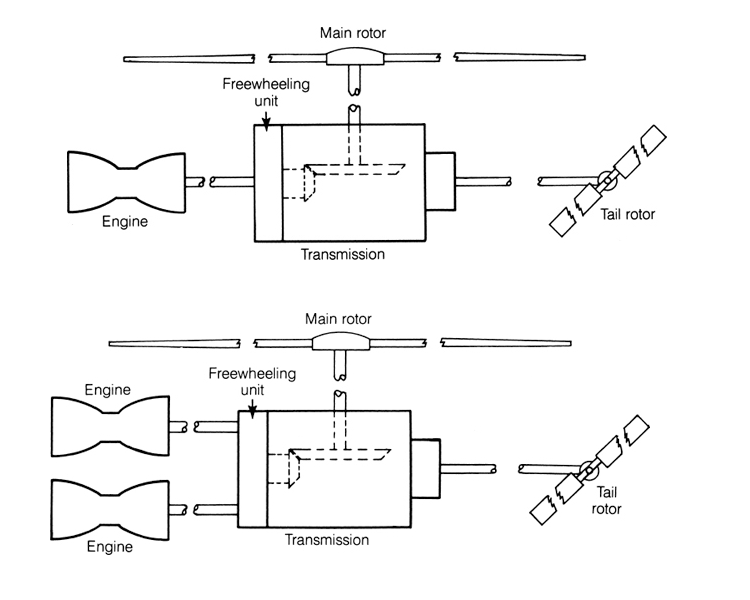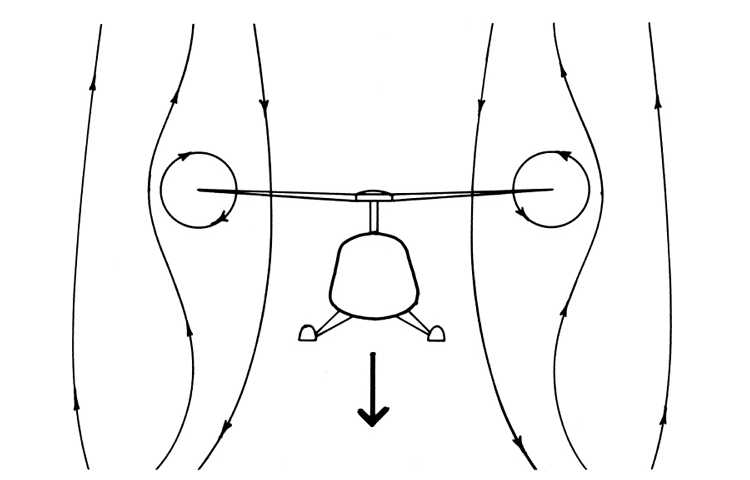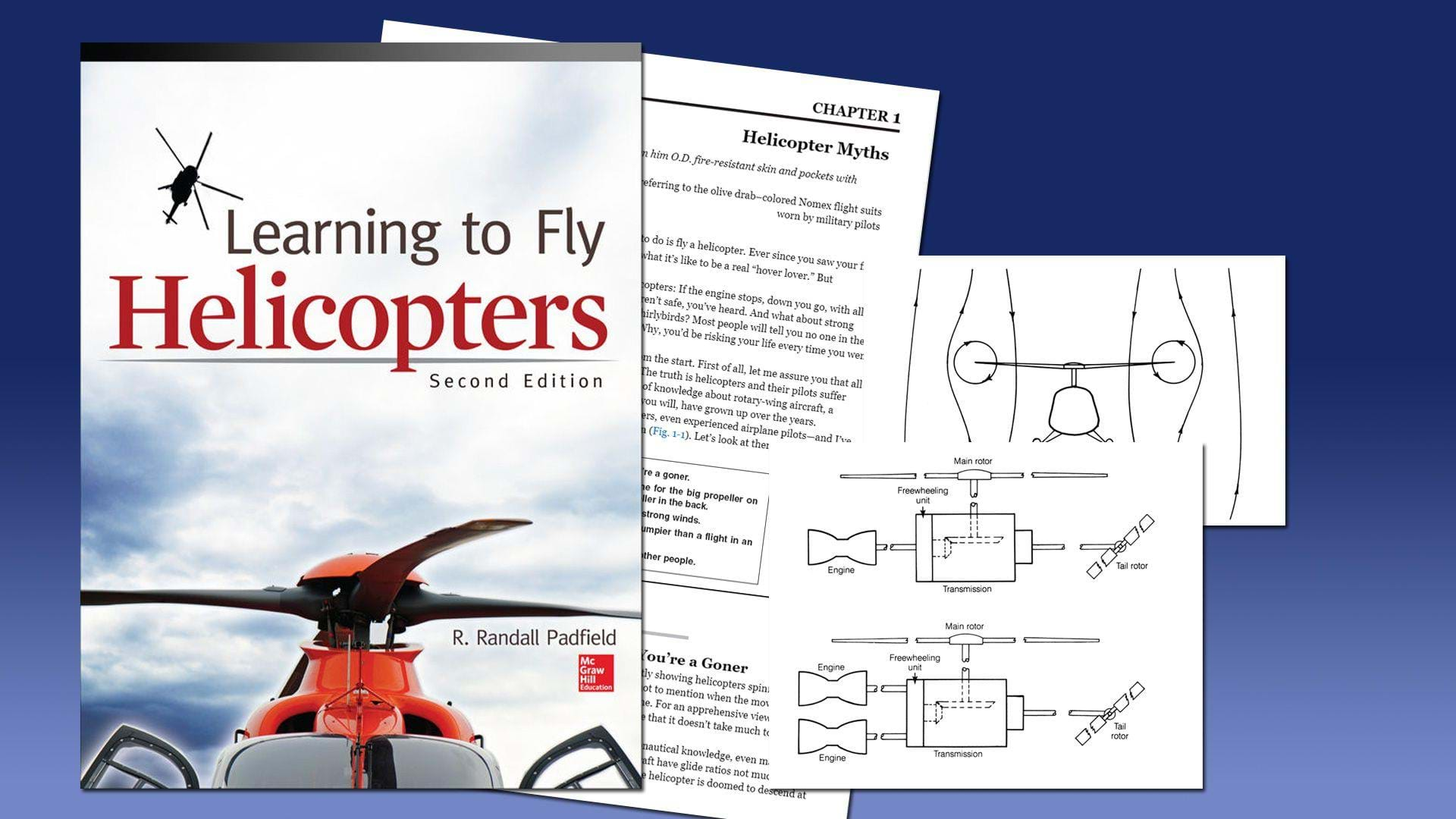Don't you love to get to know more about helicopters, how they work and how to perform operations in a realistic manner? Our How to fly helicopters section is one of the most popular parts of our website and that probably has a lot to do with the fact that we are always craving to learn more and more about our hobby and about helicopters.
Helicopter fans are among the most hardcore, dedicated, resilient and eager to learn that I have ever had the pleasure to have contact with in the past 20+ years of my "career" as a flight simmer.
We are always looking for everything we can get our hands on so that we can learn more and share what we learn with our fellow helicopter simmers as well -- which is another thing that I absolutely love about the community.
Be it an aircraft manual, the almighty checklist, take off or landing procedures, special maneuvers or just plain old theory, we welcome all this knowledge. We embrace it.
That's probably what made me look at this book. I have heard of it some years ago but, for some reason, didn't get it and forgot about it. Then, suddenly, it appeared on a banner (go figure, ads DO work).
I took a look at the content and was sold.
The author
Learning to Fly Helicopters was first written by Mr. R. Randall Padfield back in 1992 and reviewed in 2014, when the Second Edition was born (over 20 years the initial release!).
Mr. Padfield's curriculum is nothing short of impressive. He trained and flew missions as a as a U.S. Air Force HH-3E rescue pilot, flew Sikorsky S-61s, Bell 212s and Aerospatiale AS 332Ls for Helikopter Service of Norway for 12 years and was a pilot with Trump Air of New Jersey. Rated as an airline transport pilot in helicopters and airplanes, he has over 9,000 hours of flight time.
He has worked for AIN Publications from 1993 to 2014 (serving as editor-in-chief from 1998 to 2014). While doing all this (and a whole lot more), Mr. Padfield published 5 books (4 + the second edition which is the focus of this article): Learning to Fly Helicopters (1st and 2nd Editions), Flying in Adverse Conditions, Cross-Country Flying (3rd Edition), and To Fly Like a Bird (a biography of helicopter pioneer Joe Mashman, published by the American Helicopter Society).
What's in it
So what's in this book? In a nutshell: a lot.
You'll get 24 chapters (nearly 500 pages) of amazingly good information. You need to understand that this book is directed for those that want to be helicopter pilots in real life (I would probably say that those that are already pilots will probably get something from it as well). So you will not find information regarding sims but regarding what happens in the real world. Sounds even more interesting, right?
Mr. Padfield goes from talking about why you should want to be a helicopter pilot, guides you through all the basic and advanced stuff regarding helicopters -- how helicopters fly, the controls and everything else you need (and don't need but it's always great to learn about) so that you can get your skids in the air and come back down safely.
[caption id="attachment_5548" align="alignnone" width="750"] Single and dual-engine helicopter transmissions - click for the full image. Image taken from the book for illustration purposes.[/caption]
Single and dual-engine helicopter transmissions - click for the full image. Image taken from the book for illustration purposes.[/caption]
Hazards, advanced operations, problems, issues, all of that is covered in great detail so that you know what to expect from both your training course -- if you ever take one -- or on your daily basis as a helicopter pilot.
[caption id="attachment_5549" align="alignnone" width="750"] Settling with power - click for the full image. Image taken from the book for illustration purposes.[/caption]
Settling with power - click for the full image. Image taken from the book for illustration purposes.[/caption]
You can see a couple of illustrations used in the book that I decided to add here so that you can see how easy the diagrams are to understand. Mr. Padfield's father was an engineer and the author of these graphics and he did an excellent job. There are a lot more that I wish I could show you but that would not be fair use of the images and I would not feel comfortable using them -- even if it's to talk about the book.
This book goes the extra mile (in any direction since we are talking about helicopters, right?). But it goes the extra mile over and over again. I couldn't believe the table of contents and I couldn't believe how far the author has gone to give us this amazing reading experience in terms of content.
You feel like Mr. Padfield's here for you. Not only he gives you all the insights I mentioned above but he also lets you know how to make a career out of flying helicopters and shares the stories of several pilots that he feels like they have something to contribute to this book -- and perhaps even to your future career.
He then ends the book with some warnings so that you can have a safe career. If there's one thing that you may count on reading this book is the safety tone that Mr. Padfield constantly provides you throughout the pages. Safety first -- and he continuously reminds of you of that.
Is it in English?
Are you worried about if you are going to understand the jargon of such an experienced pilot? You bet.
Mr. Padfield was very worried about the type of language used in the book -- he even addresses it at the beginning -- and so he tried to keep things at a colloquial level as if he was talking to you about his passion -- and yours.
You will not have a lot of technical jargon but, when needed, he explains it. And you will need some of it if you are serious about flying helicopters, even if only in the virtual world. You need to know what to call things, right? It's all there but in a manner that we all understand easily. So yes, it's in a non-nerd-English that we can all understand.
OK, but what's in it for ME, a simmer?
Everything. If you are like all the other helicopter flight simulation fans I've had the pleasure to talk with, you'll want to know it all, even if it's not applicable to your sim for one reason or the other. You will not have all the physical or sound nuances. You will not have the feedback from the hydraulics or the feeling of the forces on your body. We all know that and it's a pitfall that we have learned to live with already.
But you will learn a lot, know what to expect, find the differences between what your sim does and how reality should be and know how and when to use certain procedures and how to perform some great operations.
One of the things I have learned to do a lot better are climbs and descends. Mr. Padfield breaks them up really nicely and we can do it "by the book". Granted, I am still climbing and descending in a sim the way I've always done but using the author's technique I feel like I'm doing it with a purpose, a meaning. And that's very important for me, as a simmer.
I should get it, then?
If you can afford it, yes. I can't stress this enough: you will learn a lot. Even if you already know a lot of this theory, there's something in this book for everyone -- again, I think even real pilots will learns something new or get a new point of view on a subject or two.
My personal opinion is that if you are serious about your helicopter simming -- even as a hobby -- you will not regret getting this book. I love it.
Where to buy Learning to Fly Helicopters -- Second Edition
I'm sure there are other stores out there, but I got my copy at Amazon.
So, what do you think?
Did you get this book? If so, please let me know what you think on the comments section below. I would love to hear from you.




